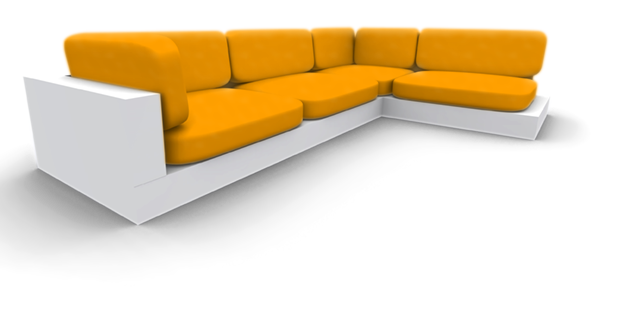| Autor | Beitrag | ||
|---|---|---|---|
violinenspieler1000       
Beiträge: 38 |
Hallo,
warum ist ein Computer-Bildschirm, wenn er nicht eingeschaltet ist, schwarz? Könnte man theoretisch auch einen Monitor bauen, der weiß ist, wenn er ausgeschaltet ist? |
||
elundril       
Beiträge: 3747 Erhaltene Danke: 123 Windows Vista, Ubuntu Delphi 7 PE "Codename: Aurora", Eclipse Ganymede |
imho nope, weil weiß durch das additive farbspektrum weiß, eigentlich nur die anwesenheit aller farben ist, und schwarz die abwesenheit aller farben. will man also den bildschirmhintergrund weiß haben, müsste man ihn permanent beleuchten. also bei TFT ist das so. Bei einem CRT-Bildschirm, müsste man halt das weiß durch die drei grundfarben erzeugen, indem man die bildschirmoberfläche mit elektronen bombadiert.
lg elundril _________________ This Signature-Space is intentionally left blank.
Bei Beschwerden, bitte den Beschwerdebutton (gekennzeichnet mit PN) verwenden. |
||
jaenicke       
Beiträge: 19315 Erhaltene Danke: 1747 W11 x64 (Chrome, Edge) Delphi 11 Pro, Oxygene, C# (VS 2022), JS/HTML, Java (NB), PHP, Lazarus |
Es gibt auch papierähnliche Bildschirme, die eine relativ helle Oberfläche haben. Deren Pixelgröße kommt allerdings AFAIK nicht an die aktueller TFTs z.B. heran.
Die werden wegen der besseren Lesbarkeit insbesondere für Bildschirme im Sonnenlicht und z.B. für ein Handy mit extragroßer Schrift verwendet. |
||
Xabitire       
Beiträge: 114 Win Xp, Win Vista D6 PE, D7 PE |
Bauen kann man theoretisch viel!
Man könnte z.B. auch hingehen und dieses Spezialglas mit Flüssigkistallen (weiß grade nicht wie es heißt) vor dem eigentlichen Bildschirm anbringen. Dieses wird durchsichtig wenn ein Strom fließt und undurchsichtig, wenn keiner fließt. Durch die Lichtbrechung der Kristalle erscheint es dann weiß (wie beim Schnee)! Aber wofür braucht man weiße Bildschirme?! Mit freundlichen Grüßen Felix _________________ What to do if you find yourself stuck with no hope of rescue. Consider how lucky you are that life has been good to you so far. Alternatively, if life hasn't been good to you so far, consider how lucky you are that it won't be troubling you much longer. |
||
elundril       
Beiträge: 3747 Erhaltene Danke: 123 Windows Vista, Ubuntu Delphi 7 PE "Codename: Aurora", Eclipse Ganymede |
das ePaper beim Kindle von Amazon is ne ganz andere technik als TFT oder?
_________________ This Signature-Space is intentionally left blank.
Bei Beschwerden, bitte den Beschwerdebutton (gekennzeichnet mit PN) verwenden. |
||
turboPASCAL       
Beiträge: 193 Erhaltene Danke: 1 Win XP / Vischda D6 PE / D2005 PE |
_________________ Nein, ich bin nicht der turboPASCAL aus der DP, ich seh nur so aus... |
||
jaenicke       
Beiträge: 19315 Erhaltene Danke: 1747 W11 x64 (Chrome, Edge) Delphi 11 Pro, Oxygene, C# (VS 2022), JS/HTML, Java (NB), PHP, Lazarus |
Ja, beim TFT gibt es eine polarisierte Hintergrundbeleuchtung, die die Pixel sozusagen mit Licht versorgt. Dadurch verbrauchen TFTs zwar weniger als Röhrenmonitore, aber immer noch relativ viel, da derzeit nur ein relativ geringer Teil des Lichts überhaupt durch die Flüssigkristalle durchkommt.
Beim ePaper z.B. wird jedoch das Umgebungslicht reflektiert und so der Inhalt des Displays sichtbar. Energie wird so nur verbraucht, wenn man den Inhalt ändern möchte. |
||
elundril       
Beiträge: 3747 Erhaltene Danke: 123 Windows Vista, Ubuntu Delphi 7 PE "Codename: Aurora", Eclipse Ganymede |
also für seiten die sich oft ändern eher nix, oder? also ePaper wird nicht irgendwann den TFT ablösen?
_________________ This Signature-Space is intentionally left blank.
Bei Beschwerden, bitte den Beschwerdebutton (gekennzeichnet mit PN) verwenden. |
||
turboPASCAL       
Beiträge: 193 Erhaltene Danke: 1 Win XP / Vischda D6 PE / D2005 PE |
Tja, ja ...
Leider müssen wir noch 'n paar Jahre warten, vill so 4..15, bis wir unsere Zimmerwände oder Zeitungen an oder Umknipsen können wie es uns gefällt. Malern wäre dann inerhalb von Sekunden erledigt.
Wäre dann auch kein Thema. Lila, Pink und Grau mit oder ohne Bild auch nicht. _________________ Nein, ich bin nicht der turboPASCAL aus der DP, ich seh nur so aus... |
||
jaenicke       
Beiträge: 19315 Erhaltene Danke: 1747 W11 x64 (Chrome, Edge) Delphi 11 Pro, Oxygene, C# (VS 2022), JS/HTML, Java (NB), PHP, Lazarus |
Es gibt ja LED Flächen, die schon sehr dünn sind. Die werden sicherlich auch in absehbarer Zeit (in den nächsten Jahren) nicht mehr so teuer sein.
Für Flachbildschirme gibt es z.B. von Microsoft Forschungen wie man mehr Licht durch die "Pixelschaltung" bekommen kann. Bei Flüssigkristallbildschirmen sind das nur ich glaube 10% oder so. Microsoft versucht es mit gebogenen "Folienspiegeln", wobei dann eine Lichtausbeute von mehr als dem Doppelten als bei aktuellen TFTs herauskommt. Dementsprechend verbrauchen diese Bildschirme deutlich weniger Energie. |
||
elundril       
Beiträge: 3747 Erhaltene Danke: 123 Windows Vista, Ubuntu Delphi 7 PE "Codename: Aurora", Eclipse Ganymede |
das wären dann die OLED-Bildschirme, die ganz flachen oder?
_________________ This Signature-Space is intentionally left blank.
Bei Beschwerden, bitte den Beschwerdebutton (gekennzeichnet mit PN) verwenden. |
||
jaenicke       
Beiträge: 19315 Erhaltene Danke: 1747 W11 x64 (Chrome, Edge) Delphi 11 Pro, Oxygene, C# (VS 2022), JS/HTML, Java (NB), PHP, Lazarus |
Genau, das sind organische LEDs.
Und in Bezug auf Microsoft meinte ich das: www.pcwelt.de/start/...t_an_lcd_nachfolger/ |
||














